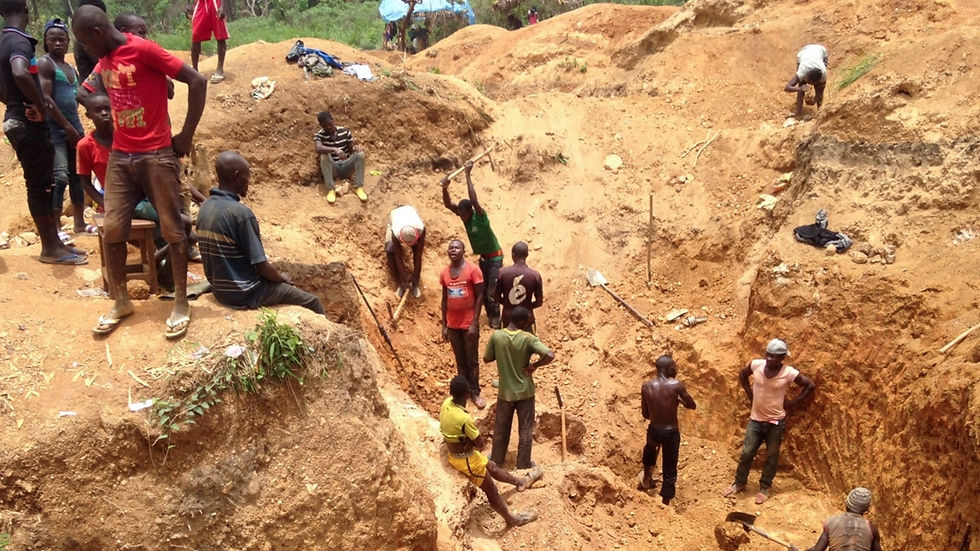Team OWL Breaking Barriers: Six Female Rangers Become Drone Pilots in the Kasigau Corridor REDD + Project
- Wildlife Works
- Jul 31
- 3 min read
Updated: Aug 4
By Jane Okoth
Not too long ago, Muna and Ruth, two female rangers at the Kasigau Corridor REDD+ Project, could only marvel at drones from afar. They saw them first in photos and then would occasionally spot them at local weddings where the drones would hover above, capturing aerial shots of the celebrations. To them, these flying gadgets were a mysterious, modern spectacle . “I used to ask myself, What kind of machine is this and how does it fly on its own?” recalls Ruth.
Fast forward to today: Ruth and Muna are no longer just curious spectators - they are among six female rangers now trained to operate drones themselves. This is thanks to a one of a kind program launched by the Project Lead in the Kasigau Corridor REDD+ Project aimed at introducing drone technology to strengthen security and conservation efforts across the project area.

The six female rangers who are recipients of this program attended weeks of hands-on training with Mara Elephant Project and LEAD ranger. The program included sessions on drone flight safety, navigation, data collection, and emergency response, enabling them to obtain Remote Pilot Licenses (RPL) as certified drone pilots. The selection process was open to all female rangers, who were invited to apply and demonstrate their interest and aptitude. After a competitive and rigorous assessment, six exceptional candidates were chosen to lead this groundbreaking initiative.
“Our initial training was tough, but after weeks of practice, flying the drone started to feel natural,” recalls Ruth. “I’m so proud not only that I am a pilot, but an unmanned pilot! This amazes me,” adds Florence Mwakio, a fellow female ranger.
Now, drones will be used to safeguard forests, monitor wildlife, and support surveillance against illegal activities across the vast Kasigau Corridor project area.

For years, these rangers have patrolled the area on foot and by vehicle. Now, they are increasing the reach and efficiency of their work by adding this powerful tool to their conservation mission. For Jane Mwaingati, also a female ranger in the program, the drone is a game changer, as it will make their work easier. “The response will be faster in emergencies such as wildlife and lost community member rescues, and we won’t have to rely solely on the gyrocopter,” she says.
Her sentiments are echoed by Florence. “We no longer have to depend entirely on foot patrols. With a drone, you can scan the area from a distance, identify any illegal activities, and alert the emergency response team,” she explains.
“My family is very proud of me and they have been encouraging me a lot on this journey,” she adds.

The impact goes beyond conservation. For the women involved, it’s about empowerment, pride, growth, and being part of a powerful story of change.
“Being a drone pilot has made us realize that there’s truly no job a woman cannot do. Ranger security was once a male dominated field, but now women are not just part of it: we are excelling at it,” says Jane.
As of now, the ladies are patiently waiting for their licenses to be processed as Kenya has stringent regulations governing drone operations. This ensures that the trained female operators, who will take full responsibility for the drones, fully comply with aviation guidelines.
The Kasigau Corridor REDD+ Project, a vital wildlife passage connecting Tsavo East and Tsavo West National Parks, faces threats from poaching, deforestation and human-wildlife conflict. With drones now added to the rangers toolkit, illegal activities can be detected earlier, and interventions will be made more swiftly and safely.
By integrating drone technology, the Kasigau Corridor REDD+ Project aims to enhance surveillance, improve response times to security incidents, and further protect the biodiversity and communities that call this landscape home while promoting gender inclusion in conservation.




